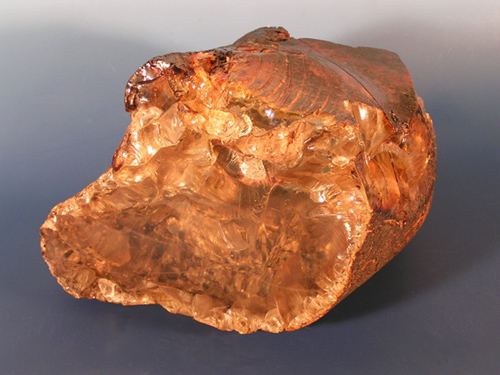We're open daily! View holiday hours
Science News
Ethiopia Amber
April 6, 2010

The important discovery of an African amber deposit, and the treasures held within it, was published today in the Proceedings of the National Academy of Sciences.
Found several years ago in Ethiopia, a large team of interdisciplinary scientists (including paleontologists, geologists and microbiologists) studied the amber for the past five years. It dates back 95 million years to the Cretaceous period.
It is known that dinosaurs roamed Africa during that period, but the fossils found inside the amber displayed many more diverse forms of life. The amber held fossilized ants and other insects, spiders, ferns, fungi and even bacteria. The ant finding is significant because it is one of the oldest ant fossils found and could reveal more about ant evolution. Until now, paleontologists thought ants originated in North America or South Asia (the oldest fossils had been found there), but it now seems that Africa could have been their starting point.
In addition, the amber deposit may provide fresh insights into the rise of flowering plants during the Cretaceous. "The first flowering plants appeared and diversified in the Cretaceous," says lead author Alexander Schmidt of the University of Göttingen in Germany. “Their rise to dominance drastically changed terrestrial ecosystems, and the Ethiopian amber deposit sheds light on this time of change."
Amber is fossilized tree resin that sometimes contains animals and plant material. The researchers do not know from which tree this amber originated. According to author Paul Nascimbene, of the Division of Invertebrate Zoology at the American Museum of Natural History, "This amber could be from an early flowering plant or a previously-unknown conifer that is quite distinct..."
Amber from the Cretaceous period is primarily found in North America and Eurasia. This Ethiopian amber is the first major discovery of its kind from the African continent. And the diversity of life discovered in this deposit promises to reveal new information about Africa’s evolutionary past.
Image courtesy of PNAS/ Matthias Svojtka